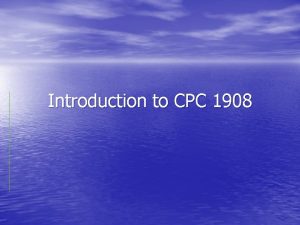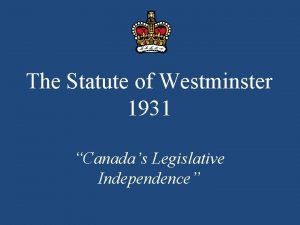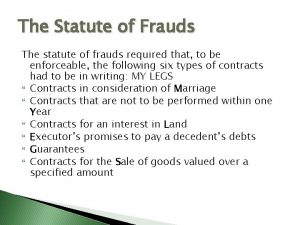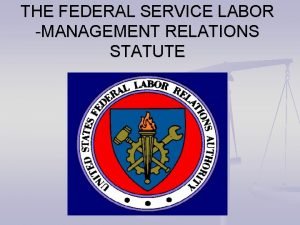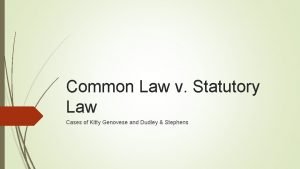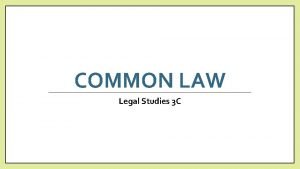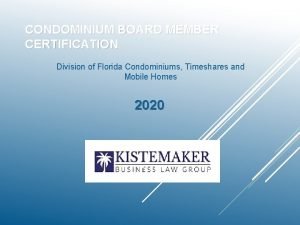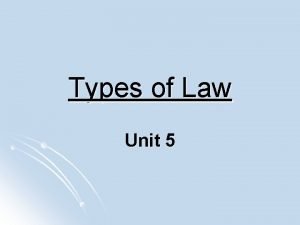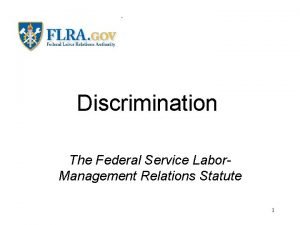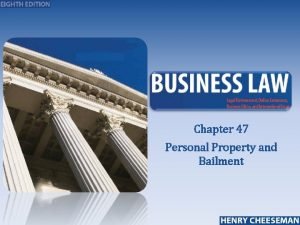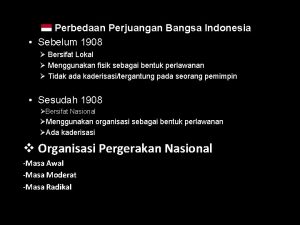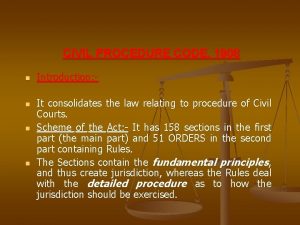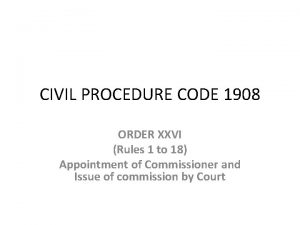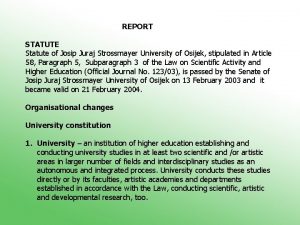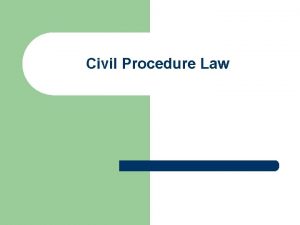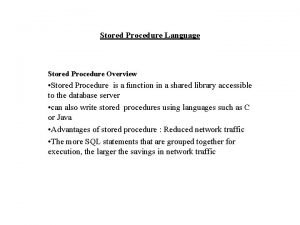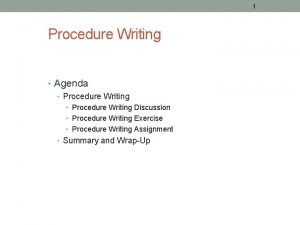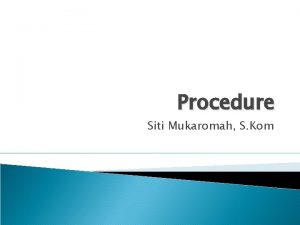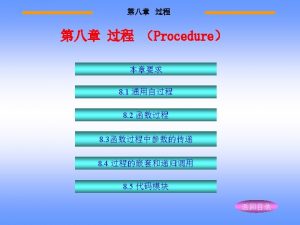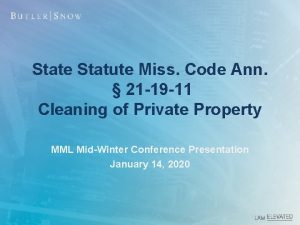CODE of CIVIL PROCEDURE 1908 Introduction q Statute


















- Slides: 18

CODE of CIVIL PROCEDURE • 1908

Introduction q Statute Prescribing law relating to procedure of Civil Courts; Structure Ø 158 Sections in First (main) part; Ø 51 ORDERS in Second part (contain Rules); Scheme Sections - Basic Principles Creating Jurisdiction; Rules Detailed Procedure for Exercising Jurisdiction;

Some Basic Definitions (S. 2) 1. 2. 3. 4. 5. 6. 7. 8. 9. 10. Decree (2) Decree-holder (3) Government Pleader (7) Judge (8) Judgment (9) Judgment-debtor (10) Legal representatives (11) Mesne profits (12) Order (14) Caveat : (S. 148 A)

Proceedings in Civil Courts q 1. 2. 3. 4. q 1. 2. 3. In Original / Trial Courts Original Suits of a Civil nature; Original Applications; Interlocutory Applications; Miscellaneous Applications including Reviews; In Superior Courts References; Revisions; Appeals;

The Most Basic Proceeding ---- “Suit of a Civil Nature”


Meaning & Scope (S. 9) q q Virtually Limitless connotation; Can involve disputes for Rights to a) b) Property or, Office a. Even if purely dependant on religious rites/ceremonies; b. With / Without Fees; c. Irrespective of being attached to any particular place;

S. 9 - The Bottomline q q Virtually any dispute or actionable grievance a potential Suit of Civil nature; Limiting clause – “unless expressly or impliedly barred”;

Typical Civil Suits Title Suits; Ø Money Suits; Ø Matrimonial Suits; Ø Guardianship Cases; Ø Succession Matters etc. ; Ø

“Jurisdiction” Ú The competency of a Court to entertain/ adjudicate upon any particular subject matter; Types of Jurisdiction: i) Pecuniary, ii) Territorial, iii) Of Subject matter;

Filing of Suits q In Court of Lowest Grade competent to try (S. 15); q Place of Suing (S. 16) – a. For immovable property – Where situated; b. If situated in different places - in any of those Courts or, c. Where Defendant resides / works for gain or, d. Where cause of action / part arises;

Finality of Proceedings -I u S. 10: Stay of Suits - the matter in issue is directly and substantially same, as in a former suit between same parties – u If Ø No Court to proceed with Trial in a suit, till decision of earlier Suit,

The Finality -II u. S. 11: Res – Judicata - If the in issue matter is directly & substantially same, as in a former suit – ØA suit / Issue already decided not to be reopened / re-adjudicated subsequently between same parties, or those claiming through them;

Stages in Suit hearing / trials 1. Filing in Court, 2. Preliminary Scrutiny (O. VII), 3. Issuance of Summons / Notices (O. V), 4. Ascertaining Contest after Service (O. IX), 5. Completion of pleadings (WS etc. ) (O. VIII), 6. Disposal of Interlocutory Applications,

Stages in Suit Hearing / Trials 7. Framing of Issues (At any stage), 8. Discovery, Inspection /Admissions (O. XI); 9. 10. Ø 11. Evidence of plaintiff (s); Evidence of defence side(Order XVIII); Cross-examination of witnesses giving evidence in chief by way of affidavits (Post amendment); Arguments;

The Conclusion 12. Judgment (O. XX);

The Conclusion 13. Execution – If not complied within specified time;

 Civil procedure code 1908
Civil procedure code 1908 Statute of westminster 1931
Statute of westminster 1931 My legs statute of frauds
My legs statute of frauds Federal service labor-management relations statute
Federal service labor-management relations statute Difference between statute and common law
Difference between statute and common law Common law australia
Common law australia Company statute
Company statute Florida statute 718 pooled reserves
Florida statute 718 pooled reserves Statute law examples
Statute law examples Alabama dui statute
Alabama dui statute Federal service labor management relations statute
Federal service labor management relations statute Statute of frauds my legs
Statute of frauds my legs Florida statute 252
Florida statute 252 Estray statute
Estray statute Civil rights and civil liberties webquest
Civil rights and civil liberties webquest The juvenile delinquents act
The juvenile delinquents act 5 basic human needs
5 basic human needs Perjuangan yang bersifat lokal adalah
Perjuangan yang bersifat lokal adalah πορτογαλεζα
πορτογαλεζα
